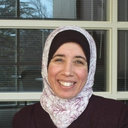Cytotoxic Homoisoflavones from the Bulbs of Bellevalia eigii.
Klíčová slova
Abstraktní
Eight new and 10 known compounds were isolated from an organic extract of the bulbs of Bellevalia eigii as part of a search for anticancer leads from native plants of Jordan. Of these, the series of 16 homoisoflavonoids (1-16) comprise the seven new analogues 7-O-methyl-3'-hydroxy-3,9-dihydropunctatin (3), 6-hydroxy-7-O-methyl-3,9-dihydropunctatin (6), 7,4'-di-O-methyl-3'-hydroxy-3,9-dihydropunctatin (9), 7-O-methylpunctatin (10), 7-O-methyl-3'-hydroxypunctatin (13), 5-hydroxy-7,8-dimethoxychroman-4-one (14), and 7-O-methyl-8-demethoxy-3-hydroxy-3,9-dihydropunctatin (15). The known ferulic acid-derived acrylamide (17) and the new methylthioacrylate bellegimycin (18) are also reported. The structures were elucidated using a set of spectroscopic and spectrometric techniques; the absolute configurations of compounds 1-9, 15, and 16 were determined using ECD spectroscopy, while a modified Mosher's ester method was used for compound 18. Optical rotation data for the known compounds 1, 2, and 8 are reported here for the first time. The cytotoxic activities of all compounds were evaluated using the MDA-MB-435 (melanoma) and HT-29 (colon) cancer cell lines. Compounds 4 and 9 were the most potent on the latter cell line, with IC50 values of 1.0 and 1.1 μM, respectively. Compounds 1-18 were assessed for antimicrobial activity using a collection of bacteria and fungi; compounds 4 and 12 showed promising activity against the bacterium Mycobacterium smegmatis with MIC values of 17 and 24 μg/mL, respectively.


